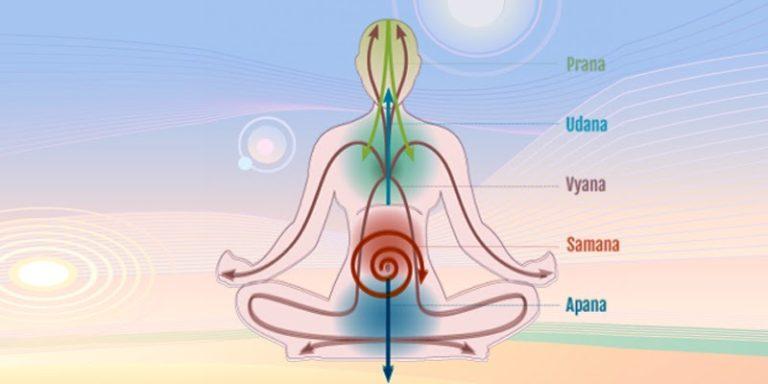Understanding the Vayus in Yoga: The Five Vital Energies

In the yogic tradition, the concept of prana—the life force or vital energy—is central to understanding how the body, mind, and spirit function in harmony. According to ancient yogic texts, this life force doesn't move randomly through the body; rather, it follows specific patterns, directions, and functions. These patterns of movement are known as the Vayus in yoga, a Sanskrit word meaning “winds” or “currents.”
There are five primary Prana Vayus, each with a distinct role in maintaining our physiological and energetic balance. When these Vayus are balanced and functioning harmoniously, they promote health, clarity, and spiritual awareness. When imbalanced, they can lead to physical discomfort, mental unrest, and energetic stagnation.
The Five Prana Vayus in Yoga
-
Prana Vayu – The Inward Moving Energy
-
Location: Chest and head region
-
Function: Governs inhalation, heart function, and the reception of sensory impressions
-
Direction: Moves inward and upward
-
Balance indicator: Clear thinking, strong heart and lung function
-
Yoga Practices: Deep breathing, meditation, heart-opening poses like Ustrasana (Camel Pose)
Apana Vayu – The Downward and Outward Moving Energy
-
Location: Lower abdomen, pelvic region
-
Function: Responsible for elimination, reproduction, and grounding
-
Direction: Moves downward and outward
-
Balance indicator: Healthy digestion, elimination, and emotional stability
-
Yoga Practices: Grounding asanas like Malasana (Garland Pose), Mula Bandha (root lock), forward folds
Samana Vayu – The Balancing Energy
-
Location: Navel and digestive fire region
-
Function: Manages digestion, assimilation of nutrients, and internal balance
-
Direction: Moves inward toward the center
-
Balance indicator: Strong metabolism, balanced emotions, focused mind
-
Yoga Practices: Twists, core activation exercises, Agni Sara, Navasana (Boat Pose)
Udana Vayu – The Upward Moving Energy
-
Location: Throat and upper chest
-
Function: Controls speech, self-expression, and upward movement of energy
-
Direction: Upward
-
Balance indicator: Clear communication, vitality, spiritual growth
-
Yoga Practices: Chanting, shoulder stand, fish pose, Ujjayi breath
Vyana Vayu – The Circulating Energy
-
Location: Entire body
-
Function: Governs circulation of energy, movement, and coordination
-
Direction: Radiates outward from the center to the periphery
-
Balance indicator: Physical coordination, even energy levels, vitality
-
Yoga Practices: Flow-based sequences like Vinyasa, dynamic pranayama, full-body awareness meditation
The Importance of Balancing the Vayus in Yoga
Practicing yoga with an awareness of the Vayus allows practitioners to work with the body’s energetic anatomy—not just its muscles and bones. When the Vayus are aligned, prana flows freely through the nadis (energy channels), supporting health on all levels: physical, mental, emotional, and spiritual.
Balancing the Vayus can:
-
Enhance breathing efficiency
-
Support digestion and detoxification
-
Promote mental clarity and emotional balance
-
Deepen meditation and spiritual insight
Conclusion
The concept of the Vayus in yoga offers a profound way to deepen your practice, moving beyond the physical into the energetic realm. By learning to recognize, activate, and balance these five vital winds, you align more closely with the rhythms of nature and the deeper currents of your inner being. Whether you're practicing asana, pranayama, or meditation, awareness of the Vayus adds an enriching layer of intention and insight to your yoga journey.






